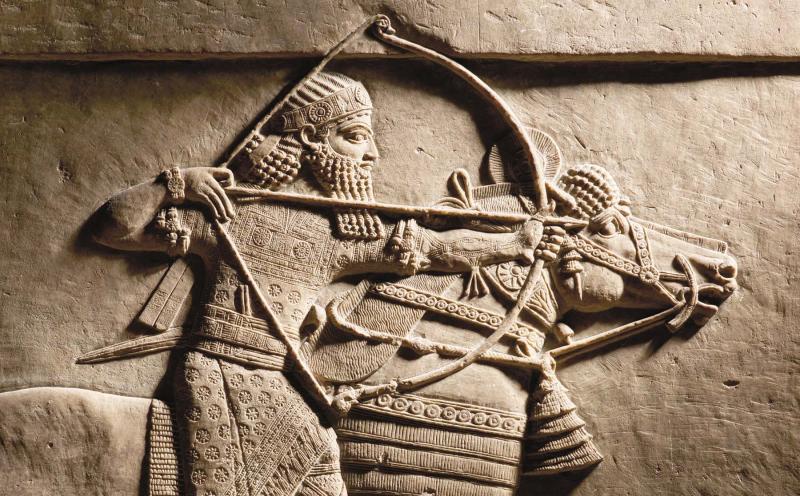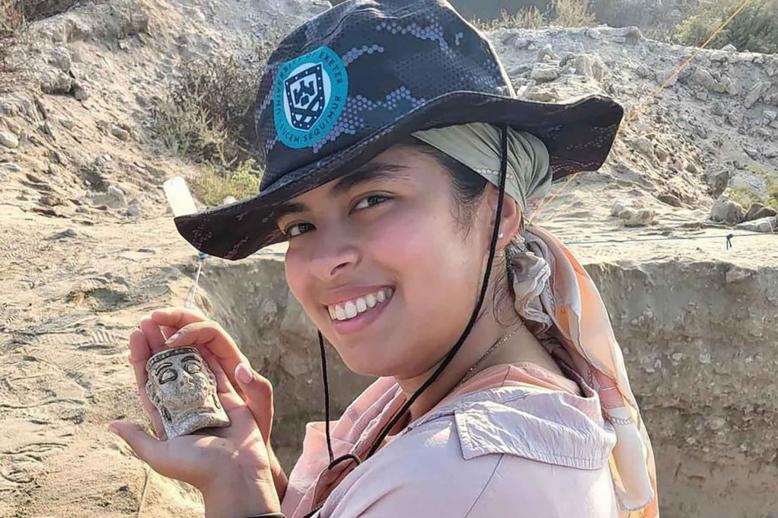British Museum brings ancient Assyrian Empire to life
LONDON - Many Assyrian ruins were wantonly destroyed by the Islamic State in northern Iraq but the British Museum has brought Ashurbanipal and his kingdom to life in a unique exhibition: “I am Ashurbanipal, King of the World, King of Assyria.”
The exhibition showcases artefacts from the British Museum’s collection that have been stored for ten years and some loans from other museums.
Ashurbanipal ruled an empire in the seventh century BC that stretched from Egypt to Iran, with its heartland in Nineveh in modern Iraq.
The exhibition begins with an expertly drawn map of the Assyrian Empire and a timeline from 1200-550BC. The story of the empire, its expansion and demise are told through many exhibits with detailed explanations of all aspects of life complementing the artefacts displayed in glass cabinets.
Ashurbanipal was appointed king over his older brother, just as his father was. The brother, the king of Babylon, didn’t take it well. Statues of various family members and letters they wrote bring the family dynamics to light.
There is no doubt that Ashurbanipal had a vicious streak and was determined to subdue his enemies and survive. When Teumman seized the throne of Elam, Ashurbanipal sent an army to subdue him. “I cut off the head of Teumman. I slew his warriors. I filled the plain of the city of Susa with their bodies,” a quote on the wall reads.
A large sculpture takes visitors into the midst of the battle enlivened by dramatic music. It shows Assyrian soldiers carrying off Teumman’s head.
An impressive use of technology by projecting colours on the carvings shows visitors what they would have looked like when they were originally painted. A blue aqueduct breathes fresh life into the green vegetation around it and Assyrian gods look resplendent in white robes.
Lions feature prominently in the exhibition. The first Assyrian wall relief in the exhibition depicts Ashurbanipal firing arrows into fleeing lions and shoving swords through their rearing chests. Lions represented power and savagery and no one could hold power but Ashurbanipal.
Ashurbanipal was also a scholar and diplomat who carried a writing stylus in his belt. He created the first library with the ambition of housing all knowledge under one roof. An impressive cabinet of cuneiform tablets that were part of the great library contains works of literature, soothsaying and magic.
Through life-size paintings the exhibition features the splendour of the king’s palace, with its spectacular sculptures, sumptuous furnishings and exotic gardens. There are drawings of aqueducts and networks of canals. Visitors become acquainted with delicacies, such as locusts on sticks, served at banquets. The wooded furniture found in the empire did not survive but furniture fittings of bronze, stone and ivory are on display.
Despite his long and successful reign, Ashurbanipal’s death is shrouded in mystery. Shortly afterward, the Assyrian Empire fell and the great city of Nineveh was destroyed in 612BC, its ruins lost until the 1840s. Their discovery enabled archaeologists to piece together a portrait of Ashurbanipal as the powerful and complex ruler he was.
The exhibition ends by switching to what’s happening in Iraq today. Nearly three-quarters of the Assyrian ruins were destroyed by the Islamic State. Through its “Iraq Scheme” the British Museum has been training Iraqi archaeologists in a wide variety of techniques of retrieval and rescue archaeology.
The show about the last great king of Assyria stirred protests against the appropriation of Iraqi heritage and the role the United Kingdom played in Iraq’s invasion in 2003.
BP’s sponsorship of the exhibition prompted activists from the theatre group BP or not BP? to protest at the opening of the exhibition. Actors posed as BP and British Museum staff, directing visitors to a sign that read “BP is delighted to be sponsoring objects from ancient Iraq. Like Ashurbanipal, we’re willing to do whatever it takes to keep control of the region’s wealth and resources.”
A spokesman for the theatre group said: “Both the British Museum and BP should be ashamed of sponsoring this exhibition. BP has played a key role in the war and in environmental destruction in Iraq. This has fuelled the social and economic inequality that Iraqis continue to suffer from and protest against.”
“I Am Ashurbanipal, king of the world, king of Assyria” is at the British Museum through February 24.
Karen Dabrowska is an Arab Weekly contributor in London.
This article was originally pulished in The Arab Weekly.







